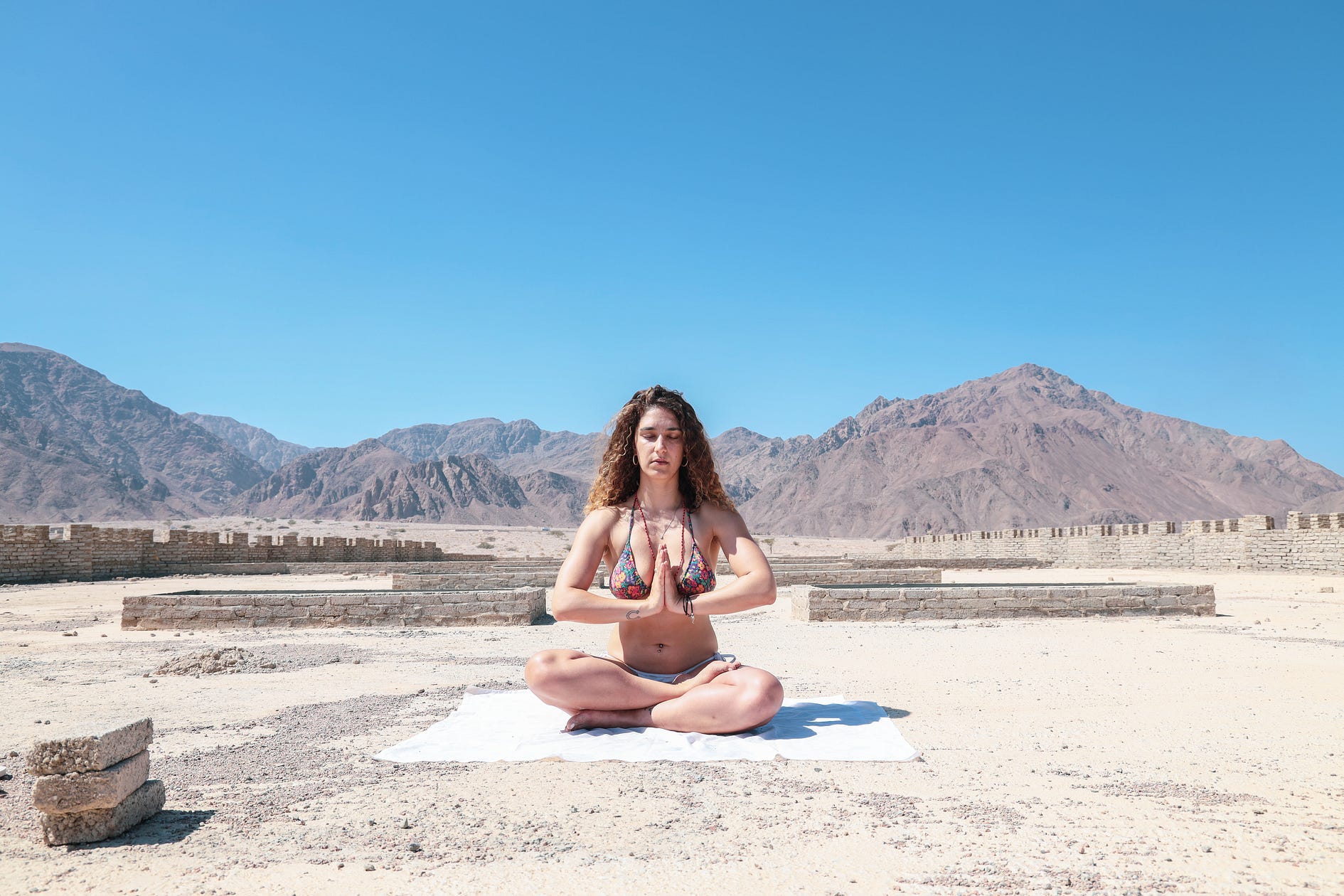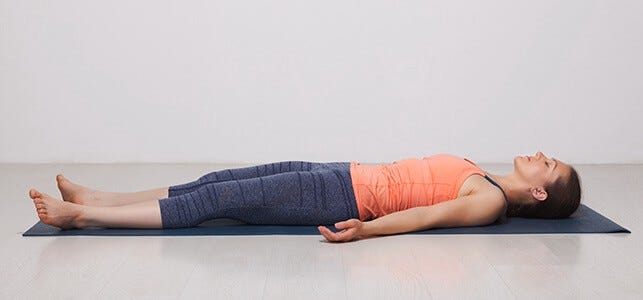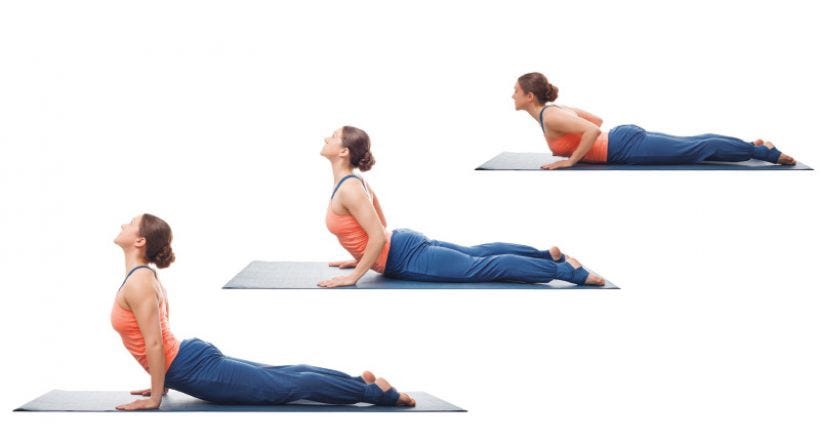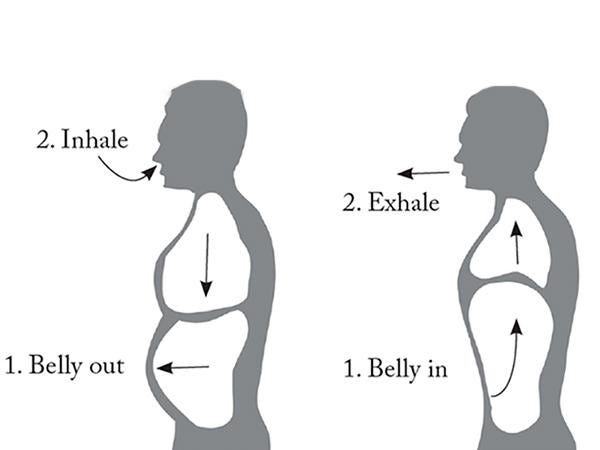Everything You Know About Meditation Is Wrong

3 Obvious Truths About Meditation That No One Pays Attention To
I started meditating two years ago. I was attracted to it for a long time but never took the time to practice regularly. It was always 10 minutes here and 5 minutes there.
Partly because I had no idea what the meaning of meditation was.
Was I just supposed to close my eyes and sit for long periods of time? Or do I always have to follow the breath?
I turned to famous spiritual books to answer this question.
Before I considered adding meditation to my life, I’d read Steve Jobs by Walter Isaacson, four times. To this day, I’m amazed as to what Jobs accomplished in his short life. In the book, Isaacson talks a lot about Jobs’ days as a teenager — consisting mostly of psychedelics, spirituality, and absurd diets.
As it turns out, Jobs had read a number of spiritual books, two of which I decided to pursue:
-
Zen Mind, Beginner’s Mind by Shunryu Suzuki
-
Autobiography of a Yogi by Paramahansa Yogananda
I bought both immediately. But for reasons I don’t remember, I kept Autobiography of a Yogi on the shelf for a couple of months. If I could go back in time, I’d change that.
Anyway, my search continued. I read Zen Mind, Beginner’s Mind which talks about Zen philosophy, its teachings, and the art of meditation.
With the help of the book and a few YouTube videos, I established a daily meditation routine.
The plan was simple — I’d start with 10 minutes, and keep on increasing the time every week or so.
All I knew was I had to focus on the breath, count to 10, and then reset. And this had to happen for an ever-increasing amount of time.
I started seeing some benefits, but not huge changes. I knew I was training my concentration and it was helping my mind to not wander as much.
But it was *dry — *it was not, for lack of a better word, fun. Increasing the amount of time every day seemed like torture.
Which is why I couldn’t stick to it for long.
4 Months Later
I finally decided to pick up Autobiography of a Yogi. This was the only book that Jobs had on his iPad — he read it every year for almost 30 years! I was excited, to say the least.
The moment I opened the book, it was hard to stop reading.
The book is based on the life of Paramahansa Yogananda and his search for God.
In the book, he mentions the ancient science of Kriya Yoga — an advanced meditation technique which he calls, ‘the airplane route to God’ as compared to all the ‘bullock-cart methods.’
Well, that was what I was feeling with my meditations — slowly dragging along as if on a bullock cart.
Even though he talks at length about the technique, he doesn’t teach it in the book.
For that, you’ve to go through a preparation period for roughly a year. There are tons of preparatory techniques to make you eligible to receive Kriya.
And I did exactly that.
After I got initiated into Kriya and reflected back on my experiences with other forms of meditation, I was finally able to figure out why they didn’t work for me.
And more importantly, why you and many others struggle to stick to it or see the benefits.
I realized that most people have a very narrow understanding of meditation. And everything you know about it might just be dead wrong.
It is not about focusing on the breath or doing a body scan. Instead, it has three key elements (while most of us focus on only one of them).
No wonder then, we fail to understand the true essence of meditation, or worse, waste our time with the wrong techniques.
1. Relaxation
This is by far the most overlooked aspect of meditation. When you think about it, it seems obvious. Yet it’s not given the importance it deserves.
Before meditating, you have to relax the body and the mind completely. If your legs are painful and you try to meditate, it’s going to be very difficult. The pain will attract all your attention.
Thus, it’s much better to free the body of all tensions before sitting.
Think of a human in the form of an energy body. By looking at him, you can tell which parts are active — the ones which are the brightest.
Now, if you look at a person who is sleeping, there is little or no energy in his body parts. Because most of it is centered in the brain and the nervous system. The brain doesn’t shut off when you’re sleeping. In most cases, that is the time when it really gets to work.
The same is the case with the meditator. When you’re meditating, the aim is to withdraw the energy from your body parts and center it in your spine and the brain.
This only happens when you relax the body. Here’s how you do it.
Diaphragmatic Breathing
We’ve forgotten how to breathe. It seems silly to say this until you realize it’s true.
Due to constant stress, or to look slim, we do not inflate our stomach while breathing.
When you inflate your stomach, you give your diaphragm space to expand. The lungs can then fill themselves with the air that they need.
Remember, the air is a form of prana (energy) or chi like the Chinese call it. It is so powerful that many saints have been able to survive without food — relying on prana (or the life-force).
This makes it important for us to learn how to breathe before we even think about meditation.
To re-train yourself, lie down at first with your knees folded and start taking deep breaths. Inflate your stomach slowly and deflate it.
It helps to close your eyes and focus on your stomach.
After a few rounds, when you feel comfortable, you can sit upright and continue the practice. It can be difficult if you’re new to it, but it gets easier with time.
With conscious effort, you can re-train yourself to use this abundant form of energy.
Savasana (The Corpse Pose)

This one of the simplest but most effective Yoga asanas I’ve come across. To practice it, lie down on a flat surface, palms facing upwards.
Now, practice 2–3 rounds of tensing and relaxation. Breathe in, tense your whole body, and then relax gently. Feel the energy flowing to all the parts of your body.
Once you’ve done this, be very still and take deep breaths. Notice the air flowing through your nostrils and observe your belly moving in and out. Let the breath be natural, don’t control it.
Feel deeper relaxation with each exhalation.
Imagine the space entering your body through your feet. Moving towards your calves, knees, buttock, stomach, arms, chest, neck and the brain. Repeat this cycle and focus on each part as long as you like, leaving it completely relaxed.
Feel yourself one with space.
Keep breathing deeply.
Inhale positivity, exhale negativity. Inhale joy, exhale sadness. Inhale peace and calmness, exhale stress.
Free your body of all negative emotions and thoughts. Be completely present at the moment.
If you feel the tension in a specific part of your body, try to relax it with even greater focus.
You can continue for as long as you want. This posture is ideal to practice before meditation and sleep. You can also practice it between various stretches/yoga postures.
Cobra Pose

Lie down facing the surface. Keep your palms turn downward beside your shoulders.
Raise your neck backward away from the ground while keeping your elbows tucked.
Now, with the help of your hands, push yourself backward and away from the surface. Feel the stretch in your spine as well as the back of your neck.
You can hold this posture as long as it is comfortable and return to the neutral position. Be careful to not strain the spine too much.
You can repeat this 3–5 times.
Child Pose
Sit on your calves with your knees folded. Keep the toe of your right foot on the toe of your left foot.
If you’re uncomfortable, you can use a cushion on or under your ankles.
Once comfortable in the sitting posture, bend forward as far as you can without hurting yourself. Try to touch your forehead to the ground.
Keep your arms beside your legs and relax as deeply as possible
Remember, the aim of these postures is not to strain but to relax.
You can repeat this 3–5 times.
2. Concentration
Now that we’ve relaxed the body, it’s time to relax the mind. The way to do that is through concentration. When you sit to meditate, you’ll feel that the mind is too active.
That’s not because you’re meditating, but because you’re finally quiet enough to see how the mind jumps from thought to thought.
The solution is simple, albeit not easy.
One of the greatest discoveries in yoga is the link between breath, energy, and the mind. When one of them becomes excited, the others follow suit. On the other hand, when you calm one of them, all of them become calm.
When you’re in a dangerous situation, your mind is excited. Consequently, your breath speeds up and your body is filled with energy to protect itself.
You can use this correlation in your favor.
This means as you calm the breath you can calm the mind. Since all three go together, the energy also withdraws from the periphery of your body, into your center.
Once you do that, you can let the breath follow its natural course and just observe it. Here’s a technique to do that:
-
Make yourself comfortable, sitting upright, with a straight spine. With your eyes closed, look at the point midway between the eyebrows on your forehead.
-
Inhale slowly, counting to eight. Hold the breath for the same eight counts while concentrating your attention at the point between the eyebrows. Now exhale slowly to the same count of eight. Repeat three to six times.
-
After inhaling and exhaling completely, as the next breath comes in, mentally say Hong *(rhymes with ‘song’). Then, as you exhale, mentally say *Sau *(rhymes with ‘saw’). *Hong-Sau means “I am He” or “I am Spirit.” Make no attempt to control your breathing, just let its flow be completely natural. Initially try to feel the breath at the point where it enters the nostrils.
-
Be as attentive as possible. If you have difficulty feeling the breath, you can concentrate, for a while, on the breathing process itself, feeling your diaphragm and chest expanding and contracting.
-
Gradually as you become calmer, try to feel the breath higher and higher in the nose. Be sure that your gaze is kept steady at the point between the eyebrows throughout your practice. Don’t allow your eyes to follow the movement of the breath. If you find that your mind has wandered, simply bring it back to an awareness of the breath and the mantra.
You can find a video tutorial here.
3. Expansion
When I say we meditate, I refer to the 3-step process that we’re talking about.
But in actuality, you’re not meditating until you reach this state. All the other techniques prepare you for meditation. But real meditation starts when you’re able to achieve a higher state of consciousness.
Once you have successfully completed the first 2 steps, the expansion stage comes automatically. Your mind reaches the superconscious state and all your energy is withdrawn from the world.
After some time in this state, you enter the experience of samadhi.
It’s what most religions refer to as Enlightenment, Nirvana, or Bliss. This is when you transcend the ego, or the little self, and merge into the Infinite, Higher Self.
There is no “I-ness”, no sense of self. You lose the illusion of separation and realize the divine One-ness with all that is.
With it comes a deep, inner communion with God which permanently alters your state of being.
Don’t feel like an impostor — these experiences are the goal, not a part of the process. For most of us, the goal is to feel some sense of expansion when we sit to meditate.
Enlightenment can take lifetimes to achieve. But if we make consistent efforts now, then victory will come soon.
Don’t Complicate It
Do you see it? Meditation is very simple.
If you don’t believe me, find meditation techniques on Google. You’ll easily be able to fit them into one of these three categories — relaxation, concentration, and expansion.
So the next time you sit to meditate, focus on all the three aspects. Don’t just sit there waiting for something to happen. Take control and put your effort in the right direction.
Why take the bullock cart when you can take the airplane?
Are you serious about becoming the best version of yourself? Get your free 5-day email course to Master The Art Of Personal Transformation

